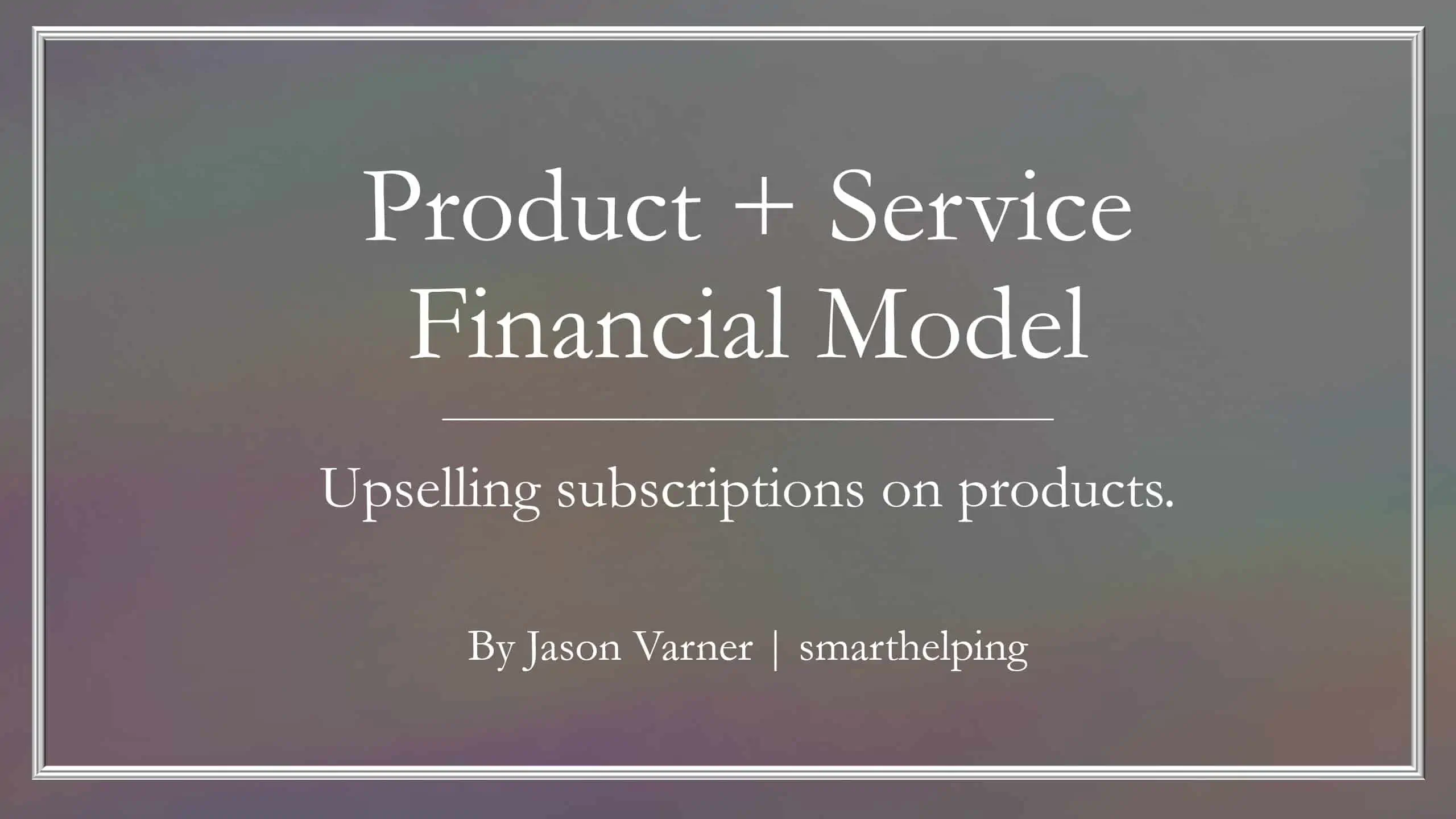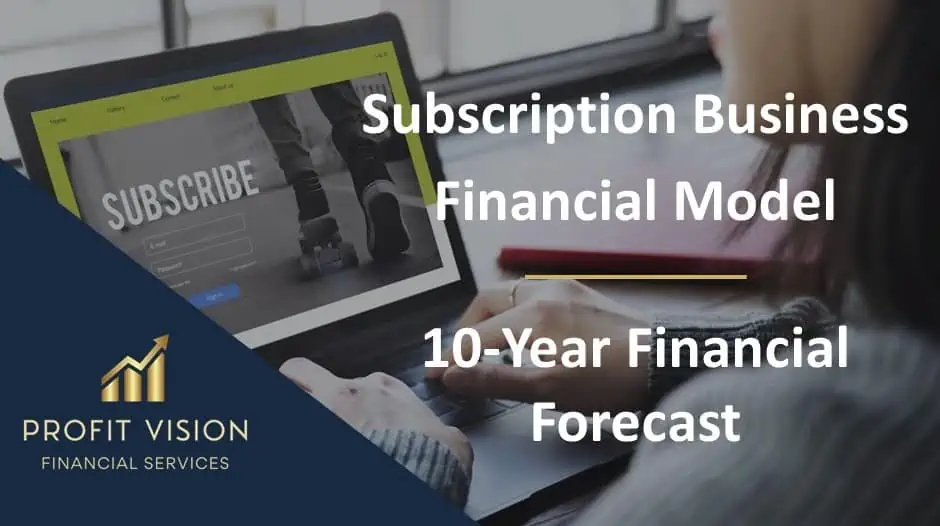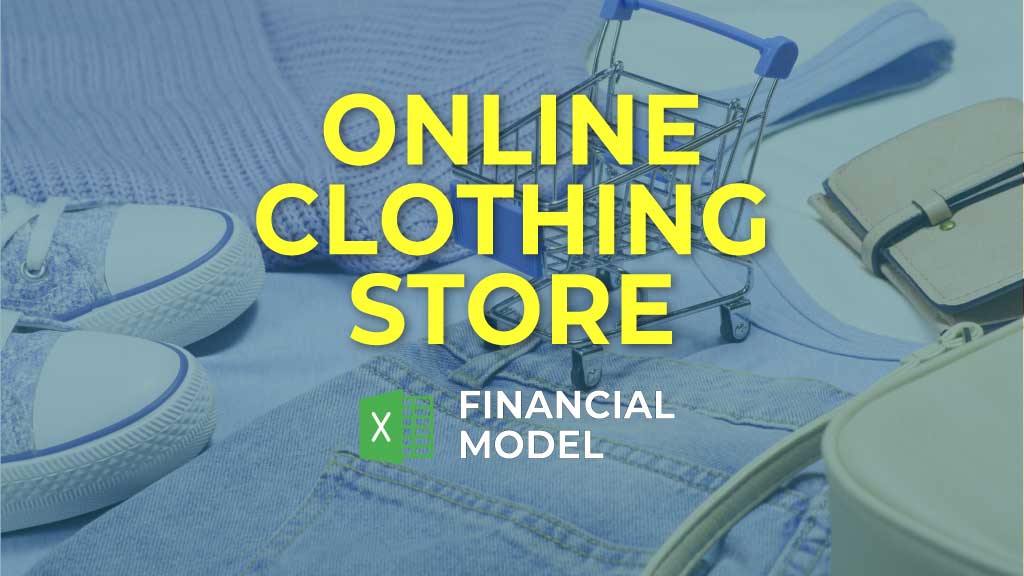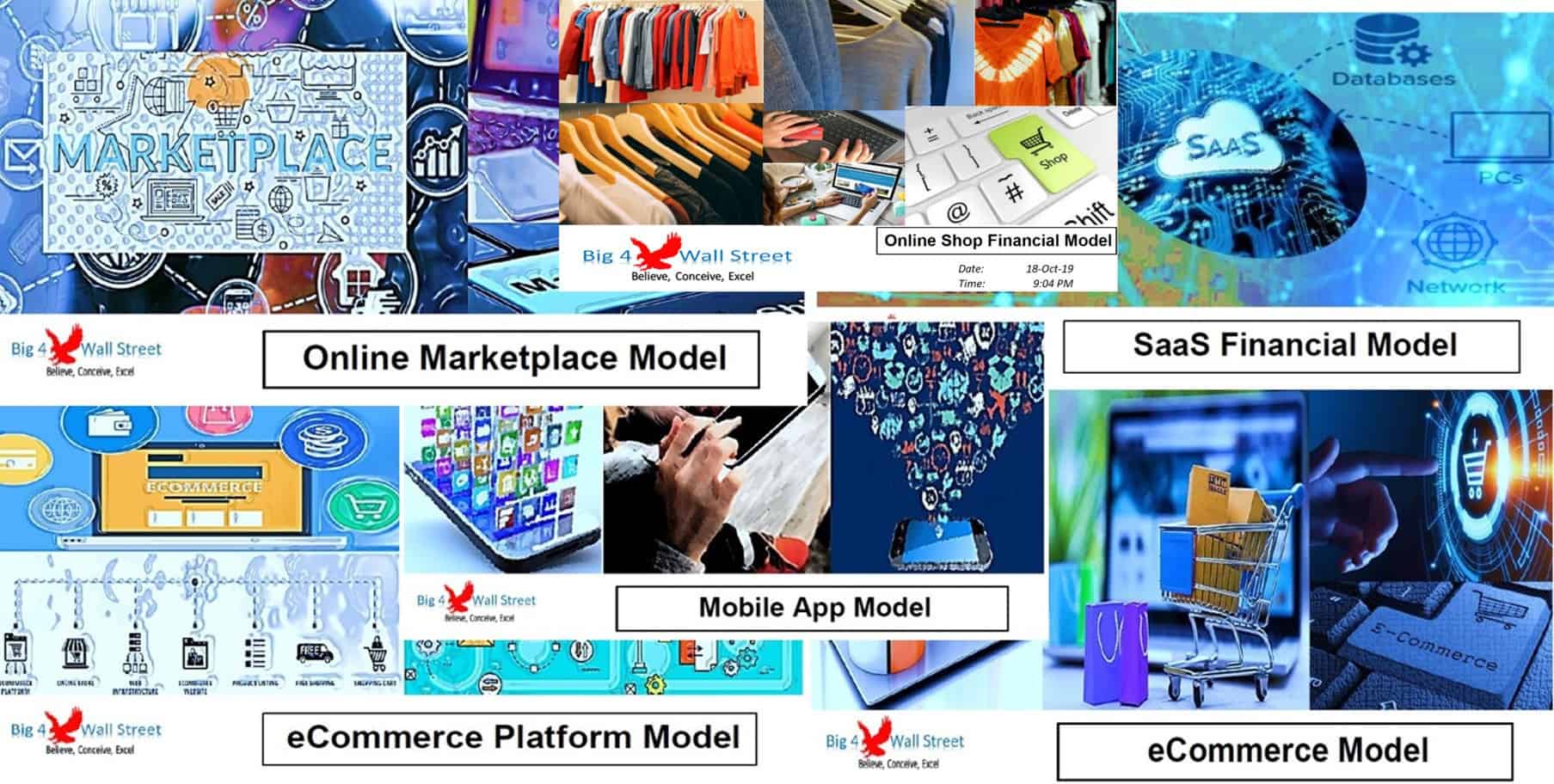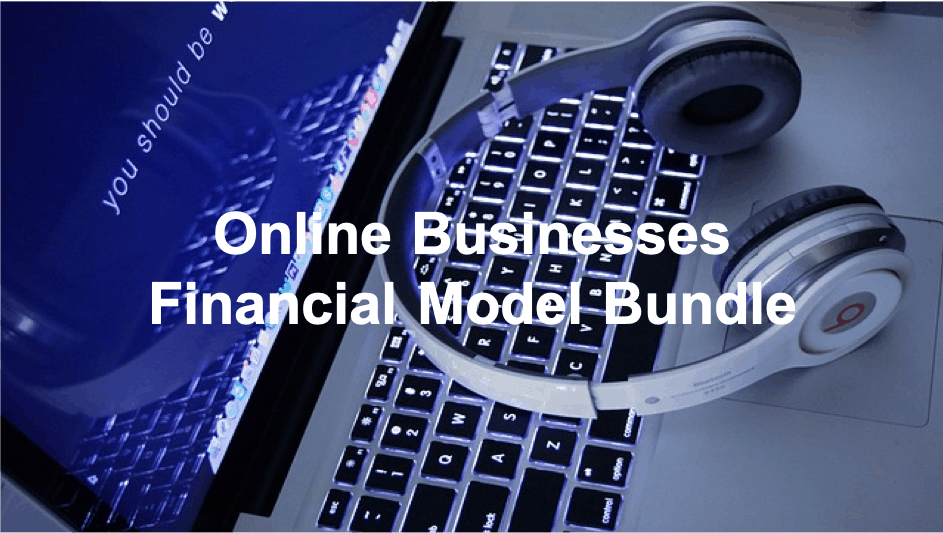Subscription Box Financial Model – Up to 72 Months
Test many variables in this financial model for a subscription box company. Includes up to six pricing tiers with advanced retention configurations.

Video Overview:
I have a fun financial model here. It is for businesses that ship customers products in a box each month for a monthly fee. It includes a bunch of features based on client feedback I’ve gotten from all sorts of subscription models in the past and has assumptions that are specific to the subscription box industry.
Customer Acquisition and Growth:
- Define up to six advertisement channels and the month each one launches, each with a monthly ad spend (adjustable by year) and an average cost per customer acquisition input.
- Define monthly organic traffic, the start month of that, the monthly growth rate (adjustable by year), and the conversion rate of organic traffic to subscription signup.
Pricing and Retention / Churn
- Define up to six subscription pricing levels, each with a monthly price, the average contract length (in months), the percentage of all signups allocated to each pricing tier, and the average retention rate of each subscription level over time (you can enter exponential decay curves, linear curves, or whatever best fits your data and research.
- You can also account for promotions by tier, for example, if customers get their first month free, or the first month half off, or what have you. The model lets the user define the percentage of the full price paid in the first 7 months of the life of a customer, and this is uniquely configured for each of the six pricing levels.
Variable / Fixed Costs and CAPEX
- Configuration for a percentage of total revenue subject to costs that can be defined as a percentage of revenue (such as credit card fees).
- Define the average monthly cost per subscription tier (this has the ability to be offset to account for inventory purchasing frequency and will affect cash flow accordingly).
- The other general cost of goods sold can be defined as a fixed monthly amount that is adjustable each year.
- There is a full schedule for other fixed costs such as general and administrative, research and development, and sales and marketing. Each of those sections lets the user define the start month, monthly cost, and whether it is subjective to payroll taxes or not.
- There is a separate section to account for any other one-time costs that are non-depreciable and happen in period 1.
- There is a separate CAPEX schedule so the user can define the purchase of any depreciable items, the month of purchase, and the useful life.
Exit Value
- The model runs for up to six full years, and you can select any end month you want. At the end month, there is an option (yes/no selector) to opt for an exit value to show or not. If ‘yes’ then any remaining debt will be paid back, and there will be sales proceeds that flow through cash flow based on a trailing 12-month revenue multiple.
Debt and Equity Financing
- This model takes all assumptions and timing of expenses into consideration and outputs the minimum equity (investment) required to keep the business afloat. That can come from inside and outside investors, each with their own percentage share and investment amount.
- The amount of debt proceeds will affect the minimum equity requirement (lowering it).
Output Reports
- Monthly and annual financial statements (3 statement model)
- Monthly and annual pro forma detail (shows customers added / lost / ending count per month and MRR per subscription tier as well as all expenses and items affecting cash flow)
- Annual executive summary
- Lots of visualizations
- DCF Analysis (for the project and for the inside / outside investments)
- Monthly average LTV, CaC, LTV to CaC Ratio, and average months to pay back CaC
This model is also included in the SaaS Financial Models Bundle.
Similar Products
Other customers were also interested in...
Product + Subscription Financial Model
Build a strategy for adding recurring revenues services to your product. Includes financial statemen... Read more
Industry Based Financial Models (Variety Bundle)
There are currently 52 unique financial models included in this bundle. Nearly all of that include a... Read more
Subscription Business – 10 Year Financial Model
Financial Model providing a 10-year financial plan for a startup or operating Subscription Business.... Read more
Subscription Meal Kit Financial & DCF Valuatio...
We are glad to present our new integrated, dynamic and ready-to-use Subscription Meal Kit Financial ... Read more
Online Clothing Store Financial Model Excel Templa...
Impress bankers and investors with a proven, solid Online Clothing Store Financial Projection Templa... Read more
Fresh Flowers Subscription Financial Model Excel T...
Impress bankers and investors with a proven, solid Fresh Flowers Subscription Budget Template. Five ... Read more
Online Clothing Wholesaler – 5 Year Financia...
Advanced Financial Model presenting a 5 Year Business Plan for an Online Clothing Wholesale company.... Read more
Online Shop Financial Model
Online Shop Financial Model presents the business case of a brand new start up Online Shop with an u... Read more
Online Businesses Bundle (6 Models)
This is a collection of selected financial model templates for projects or ventures in the Online Bu... Read more
Online Businesses Financial Model Bundle
This is a collection of financial model templates for businesses in the Information technology Indus... Read more
You must log in to submit a review.





















